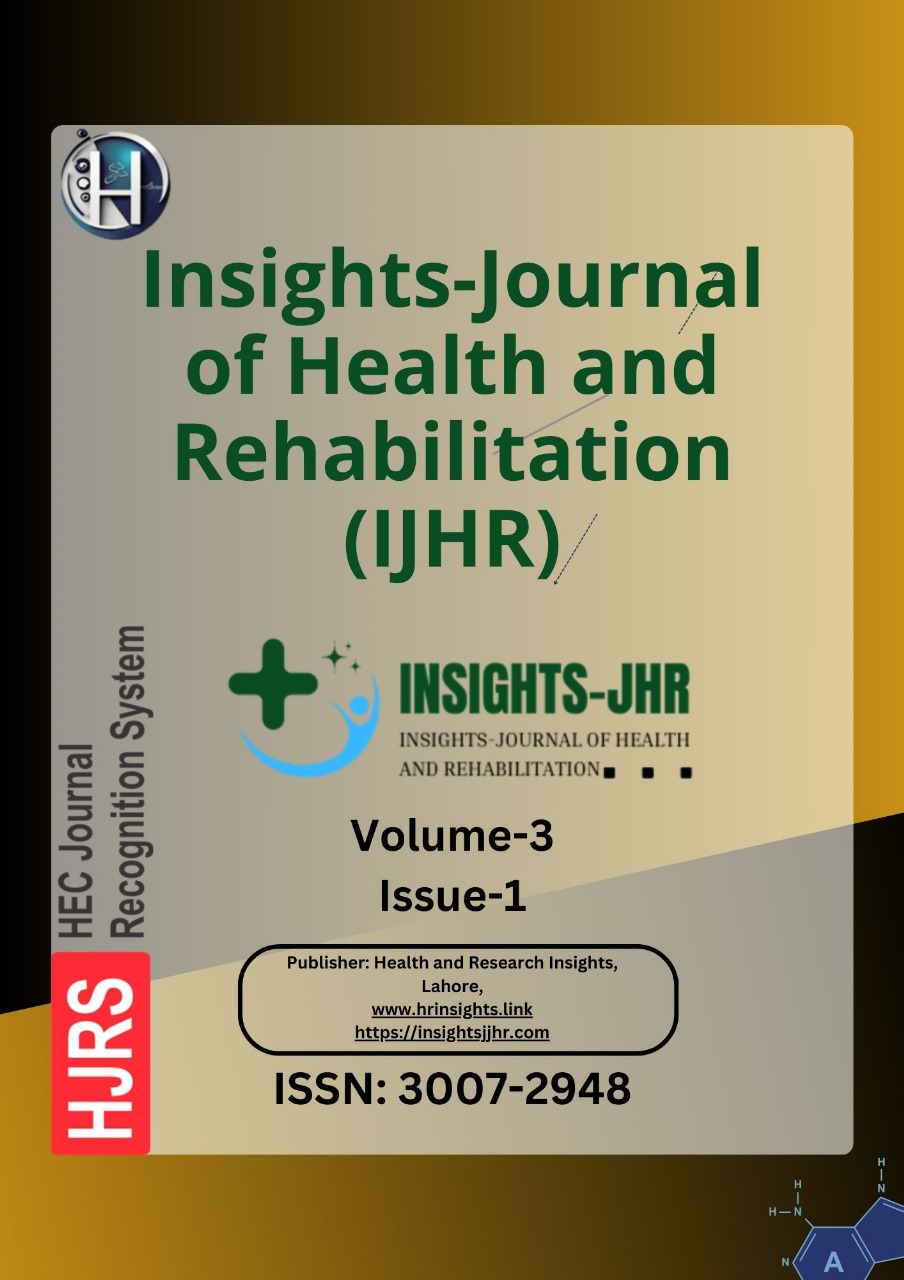ROLE OF UTERINE ARTERY DOPPLER INDICES IN PREDICTING INTRAUTERINE GROWTH RESTRICTION IN PRE-ECLAMPATIC WOMEN
DOI:
https://doi.org/10.71000/mhztrv33Keywords:
Doppler ultrasonography, fetal growth restriction, preeclampsia, pregnancy complications, prenatal diagnosis, uterine artery resistance index, uteroplacental insufficiencyAbstract
Background: Intrauterine growth restriction (IUGR) is a significant complication of pregnancy, contributing to increased perinatal morbidity and mortality worldwide. It often arises from placental insufficiency, which impairs fetal development, particularly in pregnancies complicated by preeclampsia. Early detection of IUGR is essential to prevent adverse outcomes, and Doppler ultrasonography, specifically the uterine artery resistance index (RI), has emerged as a valuable non-invasive tool for monitoring high-risk pregnancies.
Objective: To evaluate the diagnostic accuracy of the uterine artery resistance index in predicting intrauterine growth restriction among pregnant women diagnosed with preeclampsia.
Methods: A cross-sectional study was conducted from January 17, 2022, to June 16, 2024, in the Radiology Department of the University of Lahore Teaching Hospital, Lahore. Ethical approval was granted by the hospital’s ethics committee. A total of 334 pregnant women in their third trimester with clinically diagnosed preeclampsia were referred for Doppler ultrasonography to assess uteroplacental circulation. Uterine artery resistance indices were measured using a SIEMENS Sonoline Doppler ultrasound system by a certified radiologist. Data were analyzed using SPSS version 2.0. Sensitivity, specificity, positive predictive value (PPV), negative predictive value (NPV), and diagnostic accuracy were calculated using birth weight as the gold standard.
Results: Of the 334 participants, 155 (46.4%) were predicted to have IUGR based on elevated uterine artery RI, while 179 (53.6%) were not. At birth, IUGR was confirmed in 176 (52.7%) neonates. The mean uterine artery RI was 0.52 ± 0.08. The sensitivity and specificity of the uterine artery RI were 76.7% and 87.3%, respectively. The PPV was 87.1%, while the NPV was 77.1%. The overall diagnostic accuracy was 81.7%.
Conclusion: The uterine artery resistance index is a reliable predictor of intrauterine growth restriction in preeclamptic pregnancies. Doppler ultrasonography offers a valuable, non-invasive tool for early detection, enabling timely interventions and improving fetal outcomes.
Downloads
Published
Issue
Section
License
Copyright (c) 2025 Muhammad Ahmad Raza, Riffat Bibi, Abdullah Zaka , Shafqat Rehman, Syeda Kiran Aftab , Raheel Abrar (Author)

This work is licensed under a Creative Commons Attribution-NonCommercial-NoDerivatives 4.0 International License.







